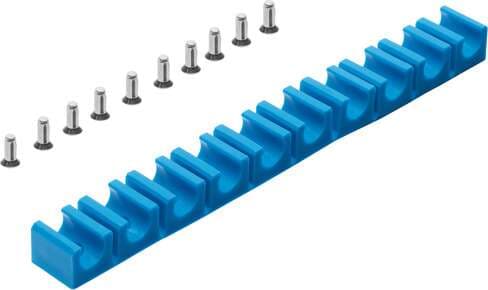| 533280 push-in fitting QB-3/8-5/16-U male thread with external hexagon. Size: Standard,... | Festo | | | |
| 529186 filter regulator MS6-LFR-1/2-D7-CRV-AS Maximum output pressure 12 bar, 5 µm filt... | Festo | | | |
| 533285 push-in L-fitting QBML-10-32-UNF-1/8-U 360° orientable, male thread with externa... | Festo | | | |
| 567951 plastic tubing PUN-H-1/2-BL-150-CB Approved for use in food processing (hydrolys... | Festo | | | |
| 564840 one-way flow control valve GRLA-10-32-UNF-QB-5/32-U Valve function: One-way flow... | Festo | | | |
| 153134 push-in T-connector QST-6-4 reducing. Size: Standard, Nominal size: 2,3 mm, Asse... | Festo | | | |
| 540171 vertical pressure supply plate VABF-S4-1-P1A3-G14 For valve terminals VTSA and V... | Festo | | | |
| 193572 vacuum generator VN-07-L-T3-PQ2-VQ2-RO1 Standard, high suction rate, width 14 mm... | Festo | | | |
| 195495 retainer GR-H-QS-3-4 For mounting the one-way flow control valves with screws, s... | Festo | | | |
| 560947 end plate VMPAL-EPR-SP Width: 28,8 mm, Length: 107,3 mm, Integrated function: Pi... | Festo | | | |


















